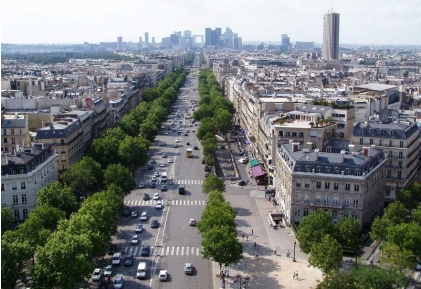I know Ablarc could do this more eloquently (assuming he agrees with this point), but I'll give this a try.
To my mind there is nothing more urban than a continuous streetwall -- and nothing less urban than a needlessly broken one.
Continuous streetwalls are in some ways the essence of the city: they result from the same pressures that create the city in the first place -- the need to pack people in tightly, not wasting any space, and position buildings close enough that you can occasionally hear muffled voices from the people next door. To have such an unbroken mass of places of living that it makes sense to walk, rather than drive, on bustling sidewalks. The resulting density, bustle and foot traffic are one measure of what a great urban area is.
Contrast that with a city that breaks up its streetwalls, tucking some buildings back in a disrespectful way. It puts the individual building ahead of the ensemble and the city, which is fine if the individual structure is the Taj Mahal and less so if it's not. It creates the senseless cacophony of snaggletoothed buildings that don't -- like this Mr. Grassi's new South End townhouse -- create a syncopated beat so much as sound the dull note of a hole in the wall ringed with a few embarrassing swaths of exposed walls that were never meant to be exposed.
Beyond that, the types of breaks in the streetwall that are becoming typical in US cities (or have been for 50 years but seem to be gaining steam today) are not only visually offensive but are impediments to the normal flows of the city, like eddies collecting at the edge of a stream. It's never pleasant to be walking along a perfectly fine street when you spy the sucking of a depressing little plaza created by a broken streetwall. Unless it's June, July or August between 9 am and 6 pm, this area will be empty, often strewn with trash and otherwise useless. At its extreme, setting buildings back from the street even runs against one of the most basic strengths of the city: that dense streets are safer, and if you're assaulted while walking down a street at night the neighbors will hear you -- but only if their windows are perched close enough to the sidewalk.
Don't get me wrong -- plazas and squares are great. But they must be purposeful. The broken-streetwall plaza is as useful as the grass on the median strip. It's a half-effort that nobody ever wants or needs but is generally either the result of a misguided desire to encourage retail (though this often doesn't work insofar as the store is that much less attractive for its surroundings) or a way to get around zoning restrictions on height. Thumbs down.




